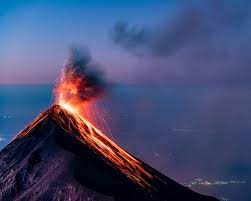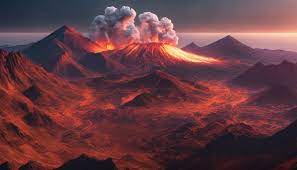
The Greek archipelago of Santorini comprises of the remaining parts of a strong well of lava. Individuals from the global IODP undertaking “Hellenic Curve Volcanic Field” have now found proof of perhaps of the biggest emission at any point kept in the southern Aegean Circular segment.
store examined from the ocean bottom at seven seaside destinations around the island of Santorini. It shows that the Christiana-Santorini-Kolumbo volcanic field was considerably more dangerous in the far off past than recently suspected.
The volcanic field in the Greek Aegean comprises of a 60-kilometer chain of more than 20 volcanoes, the majority of which are submerged. It is considered especially perilous in light of the fact that the volcanoes there have a background marked by ejections, some of which have been profoundly touchy.

For instance, the Late Bronze Age ejection of Santorini close to quite a while back likely set off the defeat of the Minoan human progress on Crete — a significant occasion for both volcanology and paleohistory,” says Dr Steffen Kutterolf, a volcanologist at the GEOMAR Helmholtz Place for Sea Exploration in Kiel.
Along with Dr Timothy Druitt from the College of Clermont-Auvergne, he drove the campaign to Santorini. The global group of researchers found another store around the island, demonstrating a lot bigger submarine ejection something like quite a while back.
According to dr Kutterolf, “The newfound tuff store has a volume of in excess of 90 cubic kilometers and really depends on 150 meters thick. This makes it multiple times bigger than the pyroclastic stream stores of the Minoan emission and multiple times bigger than those of the Hunga Tonga-Hunga Ha’apai volcanic ejection of 22 January 2022.”
Pyroclastic streams will be surges of hot debris, rock, and gas that, on account of the recently planned Santorini occasion, started from a submarine fountain of liquid magma at that point and were changed with the water into turbid streams and mud. These streams moved enormous amounts of volcanic material as much as 70 kilometers into the encompassing ocean bowls. Layers of rock from this emission have likewise been tracked down on three adjoining islands.
Different strategies were utilized to interpret the ejection. Dr. According to kutterolf, “The main dating and assessment of the water profundity at which the emission occurred were conceivable straightforwardly ready thanks to micropalaeontology.” Microfossils (foraminifera), whose land age and favored water profundities are known, were seen as straight above and beneath the pumice stores.
New map from #HVO shows areas of unrest at #Kilauea. Circles are EQ locations in south caldera, East Rift connector, SW Rift connector & near Kamakaia Hills. Colored fringes show ground deformation (uplift) associated with magma accumulation. Activity continues to wax & wane. pic.twitter.com/phChHx3iWI
— USGS Volcanoes🌋 (@USGSVolcanoes) January 12, 2024
Onboard the ship, we measured physical characteristics like density and porosity. We used a special scanning electron microscope called GEOMAR’s electron microprobe to analyze the chemical composition of the samples we drilled.
Aslo Read |Samsung’s Affordable Tab A9 Plus Now Available for Purchase in the US
This microscope sends a tiny electron beam (with a diameter of 0.01 millimeters) to the sample, providing information about the elements present, like silicon, iron, or magnesium, in the solidified magma. This helped us connect the deposits to specific locations on the seafloor, helping us understand their distribution and thickness. By using seismic images of the seafloor, we could also estimate the size of the eruption.
Even though the area had a history of explosive eruptions, the researchers believe that another eruption of this scale is highly unlikely in the near future. Still, understanding the past helps us make better predictions about the future, as Dr. Kutterolf points out.

What was the most explosive volcanic eruption?
Mount Tambora’s 1815 eruption is considered the largest and most powerful volcanic eruption in recorded history. The eruption was so loud that it could be heard from Sumatra Island, which is more than 1,200 miles away. The eruption also sent volcanic ash 40 kilometers into the sky


